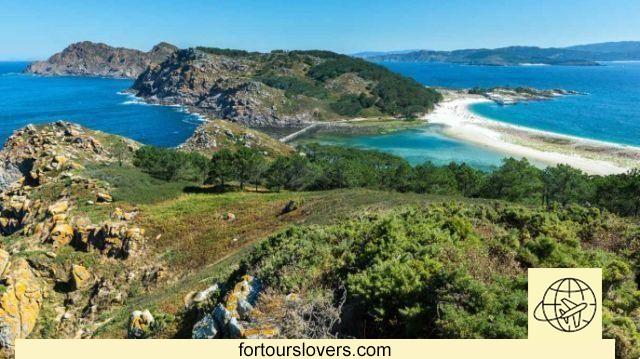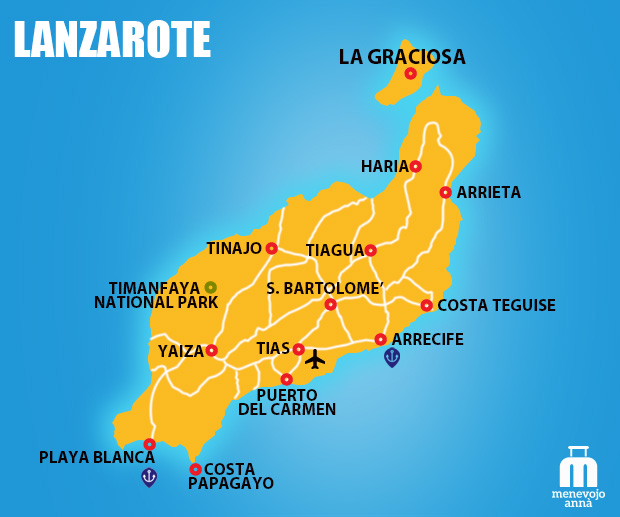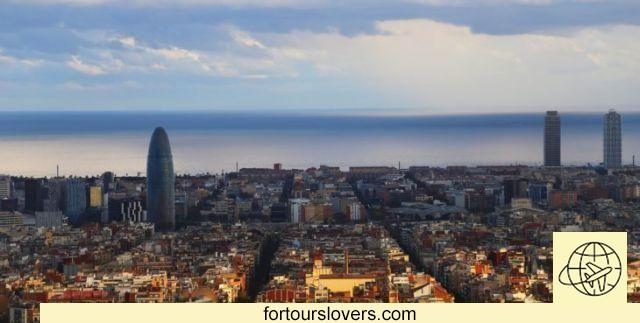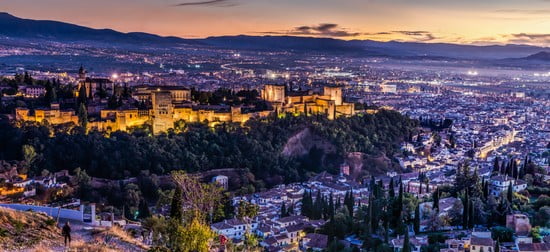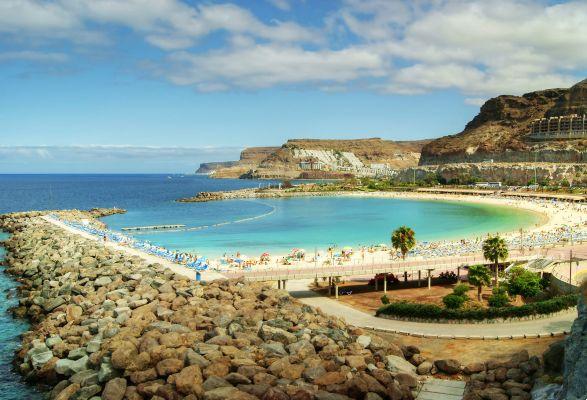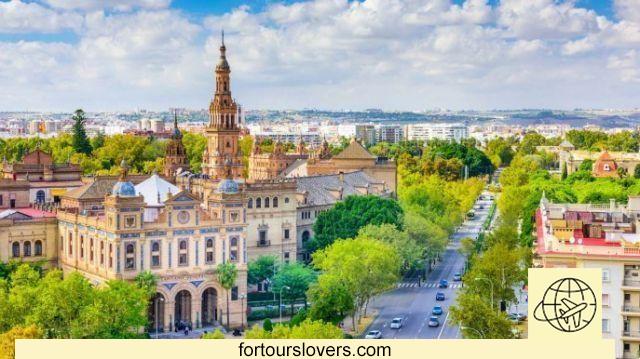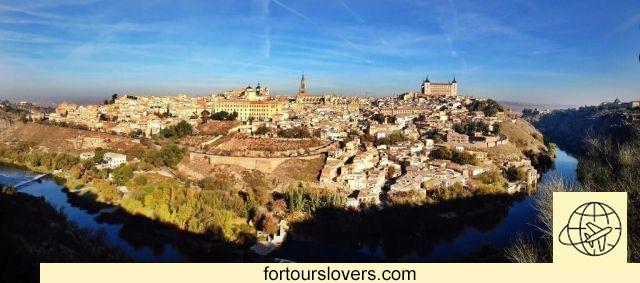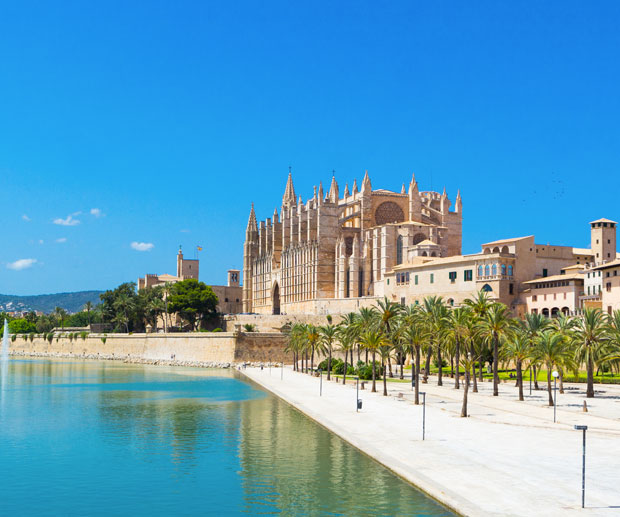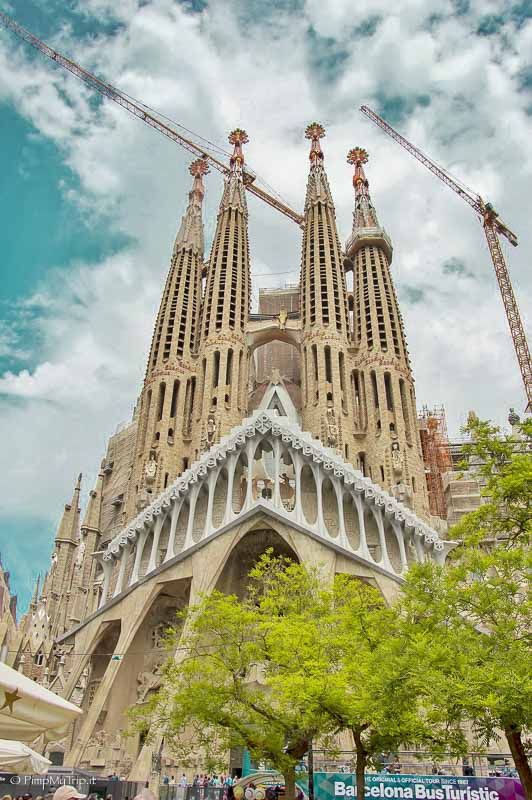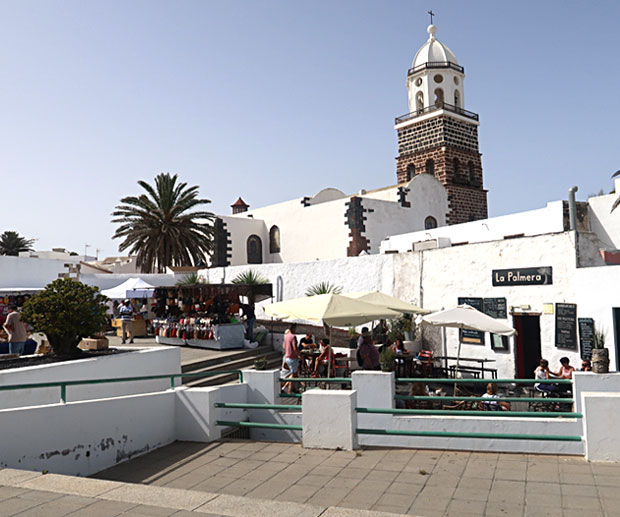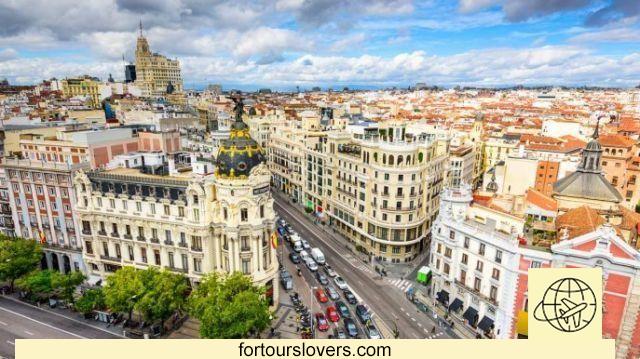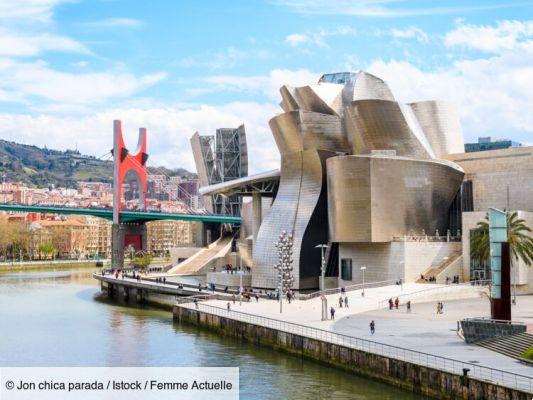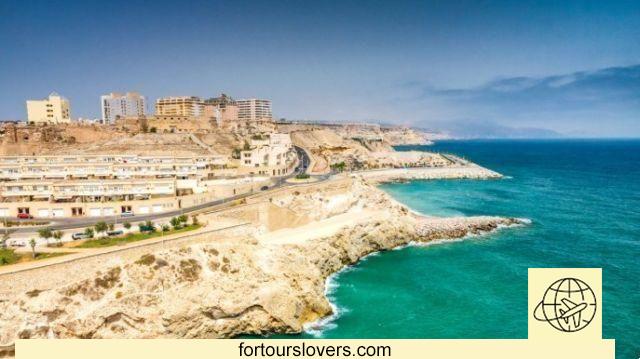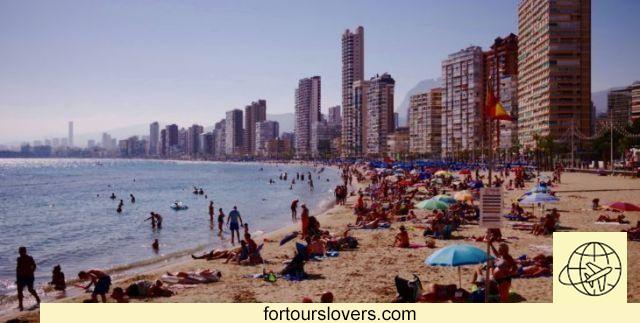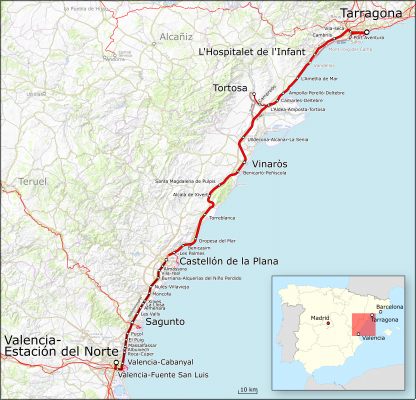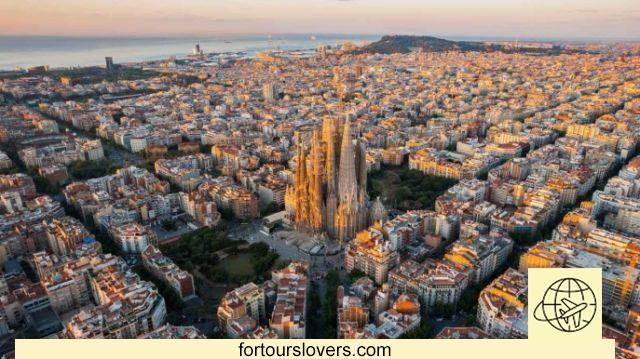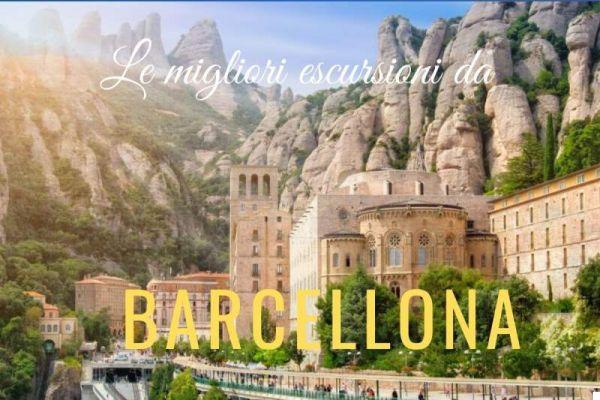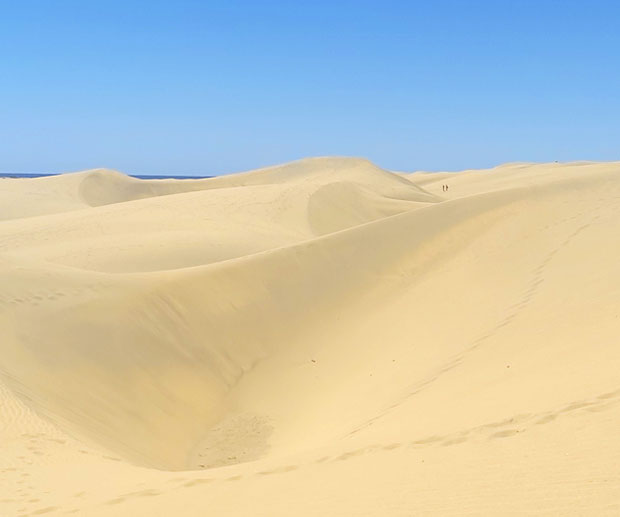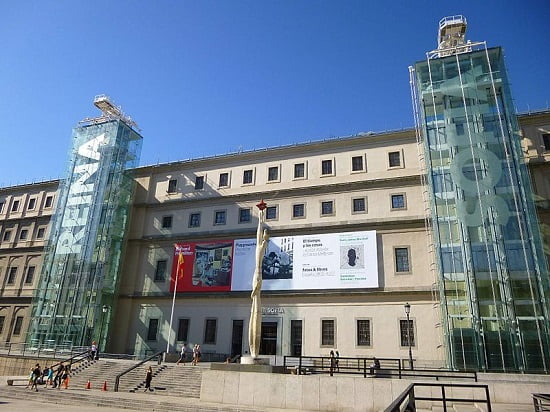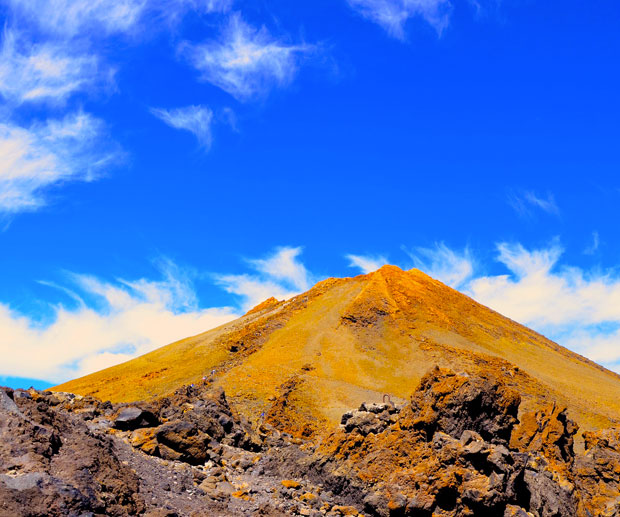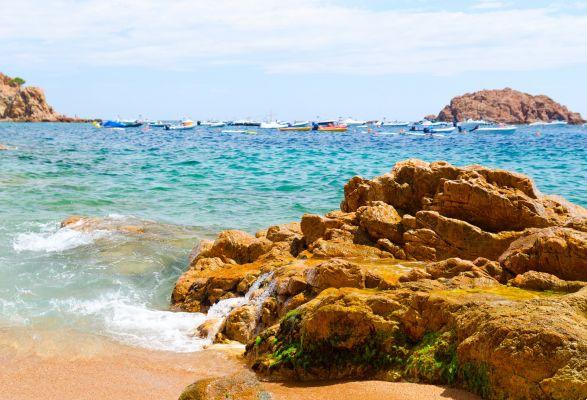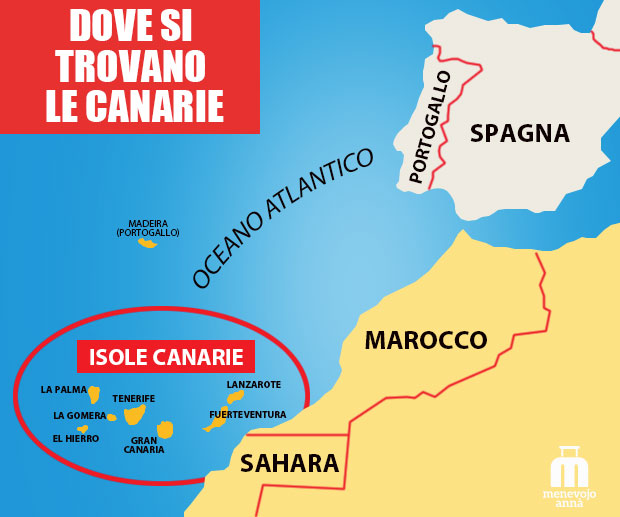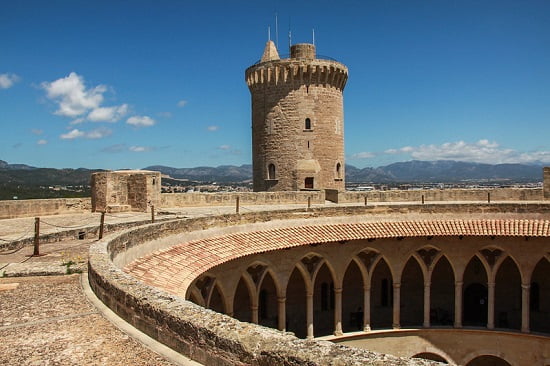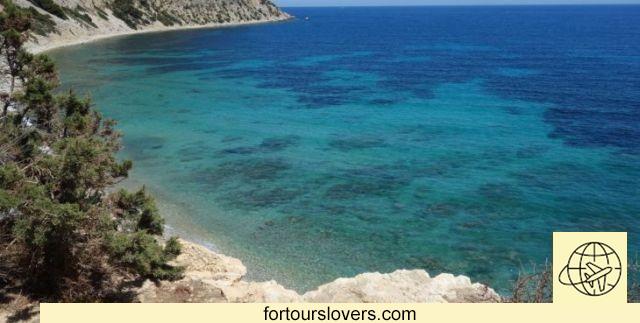
Ibiza
12 things to do and see in Ibiza and 3 not to doIbiza is an island from double soul: the summer one, unbridled, dedicated to excesses, which has made her famous in the last 40 years; and that more relaxed, quiet that takes great care of traditions and the surrounding environment. The latter inevitably emerges more in the rest of the year even if, in hindsight, the two identities also coexist in the chaotic summer months. It's just about have in mind the type of holiday you want and adjust accordingly. Below we will try to take both aspects into account also because, the "monster" numbers of turnout (stably in the order of several million visitors a year), can only be explained by considering the tourist offer as a whole. In short, Ibiza is one of the few tourist resorts that really can offer (almost) everything to everyone: transgression, relaxation, discos, excursions, seafood, land cuisine, cocktails on the beach, fine wines and much, much more. Happy reading.
1 Dalt Vila
Nine times out of ten visits to the island start from old part of Eivissa, as the inhabitants call the capital Ibiza in Catalan, which also gives the island its name. Dalt VilaFrom 1999 UNESCO World Heritage Site, is a perfect compendium of that double soul to which we referred at the beginning. It is, in fact, a great one open-air museum which, however, in the summer period is literally invaded by tourists walking around the maze of alleys narrow in the area. Obviously there is no shortage of bars, restaurants and shops, as well as no shortage of street artists and characters dressed in an eccentric way that in Ibiza, in truth, abound. Really many things to see. We report the Arab castle Cathedral Nostra Senyora De Las Neus, Museum of Contemporary Art e Placa des Amparats from which you can see a beautiful view of the city port. Be careful, therefore, not to forget the camera.
2 Port of Eivissa
After Dalt Vila it is the turn of the del Porto, another of those places where history and fun come together. Historians are the neighborhoods of La Marina and Sa Penya, ancient fishing villages, today favorite places for tourists who usually spend the evening in the area waiting for the entrance to the disco (the very famous disco "Pacha"). The two are also historical monuments dedicated to the sailors who over the centuries have made Ibiza great. We are talking about the Monument a los Corsarios, and the other entitled to People de la Mar (see photo). The first is located behind theEstacio Marittima where cruise ships and ferries from Barcelona, Valencia or nearby Formentera dock. The second, however, is located at the intersection of Avinguda de Santa Eularia des Riu, one of the main arteries of the island. Don't forget Eivissa Nova e Marina Botafoc the two marinas where the many VIPs from the world of sport and entertainment who frequent Ibiza in the summer months generally dock. These are the places where you rub with the hope of photographing some of the protagonists of the star system. For the rest, the port is a succession of bars, restaurants, boutiques and souvenir shops ready to withstand the daily impact with thousands of visitors, among the many on vacation and those, equally numerous, who disembark from cruise ships.
3 Puig des Molins Necropolis
If in addition to the sea, the beaches and the by night you are interested in deepening the history of the island, well then there Puig des Molins necropolis absolutely worth a visit. Ibiza, in fact, has undergone various dominations over the millennia. Undoubtedly the Arab one was the most significant, but before that there had been Phoenicians, Carthaginians and Romans. They were the first to build the catacombs a few hundred meters from the village where they had settled. At the time, the seventh century BC, the mills (hence the name of the locality) were not yet there. In their place mainly fruit trees, while today both the mills and the remains of the tombs (it is estimated there are more than 3000, of which about a tenth can be visited) are covered by a thick blanket of shrubs and Mediterranean scrub. To see the annex Monographic Museum where the funerary objects found during the archaeological excavations have been collected and cataloged. These are jewels, amulets, ceramics and other utensils from which it is possible to obtain valuable information on the different status of the buried dead.
4 Es Cavallet
So far we have taken care not to flatten the image of Ibiza on its more hedonistic and transgressive side. Ignoring it, however, would be a mistake, especially since, once in place, it is still impossible to do so. We take It's Cavallet, one of the most beautiful beaches on the island. It is certainly worth going there, but you have to know that in addition to the environmental data - white beach, crystal clear sea etc. - Es Cavallet is famous for being the Ibiza's official nudist beach. a primacy dating back to the first half of the 70s of the last century when Spain was still under the political-military dominion of General Francisco Franco. And, in fact, the Spanish regime tried to repress the phenomenon, without being able to eradicate it. Therefore, Es Cavallet is a piece of Spanish history, an example of freedom on the basis of which in the post-Franco years they came to Ibiza nudists, naturalists, gays and lesbians from all over the world. The beach, which is part of the Natural Reserve of ses Salines, is located in the southern side of Ibiza and is well connected by public transport from the capital Eivissa.
5 Espalmador
Those who come to Ibiza almost always allocate a day of their vacation to the neighbor Formentera. The connections from Sant Antoni and Eivissa are frequent and the journey is short. Obviously, despite being smaller and decidedly less inhabited (about 11.000 inhabitants), Formentera cannot be visited in a single day, if only for the large amount of beaches it has. The beaches to the north, in the peninsula of Es Trucadors, are the most famous touristically: above all Illetes, but they are worth a visit as well Llevant, Es Cavall ed Espalmador (S'Espalmador, in Catalan). The latter is a small island (approx. 3 km long and 1 km wide) 150 meters from the Es Trucador peninsula but, due to the strong currents, it is forbidden to swim. Therefore, once you arrive in Formentera, you have to take a boat that shuttles daily from the port of La Salina to Espalmador. That said, it's totally worth it. The feeling, walking on the fine white sand of Platja de S'Alga (the beach of the islet), is to be in the Caribbean to which, moreover, this remote island in the center of Natural Reserve of ses Salines, it really has nothing to envy. Highly recommended.
6 Westend
Ibiza it shares the same fate as Mykonos, that of being considered above all one "Party island". An island, that is, where bpm, alcohol and transgression mark the days of the tourists present. And, indeed, it cannot be said that the stereotype does not reflect reality. Let's take the Westend, the local area of St. Antoni de Portmany, the second largest municipality on the island by extension and number of inhabitants (about 20.000). Those who cannot afford entry to the most expensive clubs in Eivissa come to have fun here in southwestern side of the island. From May to October the Westend practically never sleeps: noise all day and clubs practically everywhere. It doesn't even make much sense to talk about nightlife anymore, since parties can be found at any time of the day. In clubs, on the beach and even on a boat. And yes, because in the port of St Antoni the "boat parties" are docked where from sunset onwards, cocktails and ball music go on. Finally a piece of advice: if you like sunsets don't forget to bring your camera: those of St. Antoni de Portmany, according to most, are the most beautiful in Ibiza.
7 Cala Bassa
About 9 kilometers from St. Antony de Portmany there is the small (about 300 meters long) but suggestive Cala Bassa beach. The peculiarity of this inlet is that it has a pine forest behind it (due to the large quantity of maritime pines, Ibiza e Formentera they are also called "Pitiuse Islands") where, if you want, you can equip yourself with a sun bed and deckchair without using an umbrella. Obviously, in the pine forest behind there is no shortage of snack bars and restaurants, as well as not missing an accorsato camping especially chosen by families with children in tow. A advantageous formula which allows to reconcile the proximity to the sea with a one lower expense compared to the hotel stay (click here for the list of recommended hotels). To be seen!
8 Santa Agnés de Corona
After the beaches, the dirinks, the boat trips and the disco nights, who wants to know "the other Ibiza", the one away from the lights and excesses of worldliness, must necessarily visit Santa Agnes de Corona, small rural village north of St. Antony de Portmany. A village of just 300 souls, in which the landscape is dominated by the pascoli, sheep and expanses of almond trees, by far the most widespread crop in the area. Of course, tourism has also arrived here but, as stated at the beginning, it is a different type of tourism from what we are traditionally used to thinking about Ibiza. Santa Agnés de Corona borders on Sant Mateu D'Albarca, another rural settlement where, in addition to almond trees, vines are cultivated. If desired, therefore, the visit can also be extended to Sant Mateu. Not to be missed!
9 Cala d'Hort
The last stretch of road to get to Cala d'Hort is not easy and sometimes it happens not to find a place in the parking lot above the beach. Beach which by the way is not very large, just 200 meters long. So, one wonders, why is it one of the most popular in Ibiza? Certainly for the water quality, even if the sea in Ibiza is almost everywhere of excellent quality, and therefore the popularity of Cala d'Hort is to be sought elsewhere. The real reason why tourists come this far (23 kilometers from Ibiza, 11 from Sant Josep de Talaia) is the view of the three “Dragon Islands”: Es Vedrà (see photo), Es Vedranell, Es (Sa) Galera. Specially Es Vedra, high scoglione 382 meters whose vision, from a certain point on, represents a safe guide for motorists who are about to reach the location. As almost always happens in these cases, Es Vedrà is at the center of numerous stories: from the inevitable UFO to the more famous one according to which the island was inhabited by a giant greedy of squid. Legend has it that, to appease his insatiable appetite, the titan kidnapped two young fishermen whose only reason for survival became precisely that of satisfying the monster's requests. One day, however, one of the two had the intuition to mix a hedgehog among the molluscs, a circumstance that caused severe abdominal cramps in the giant allowing, conversely, the escape of the boys. Legends aside, the close-up view of Es Vedrà has a magnetic appeal, especially at sunset. We must not forget, in fact, that Cala d'Hort is located on the western side of the island, and is therefore one of the most suitable places for those who love crepuscular atmospheres.
10 Hippy Markets
La hippy culture deeply marked him lifestyle of Ibiza. We have seen it with regard to nudism, a practice that the very Catholic Spain in a first phase opposed, only to have to tolerate its spread, especially on the islands. And, after all, not only nudism, even clothing for years has obeyed above all the need for make a scandal. The scandal then became eccentricity and, in turn, eccentricity has become commercial over time. This is a bit like the parable of the hippy market of Punta Arabì, in Es Canar, north east of the island. Nonetheless, this market continues to be a must for an Ibiza holiday. Takes place every Wednesday from April to October and allows a wide choice between clothing, artistic crafts, costume jewelery and street food. These are the characteristics of the Las Dalias market, not far from Es Canar. Only the day changes: the Saturday instead of Wednesday. In short, even if the alternative spirit of the origins has been lost, these markets still remain an important opportunity to sociality e cultural exchange among the many tourists on holiday in Ibiza. Do not miss.
11 Cova de Can Marçà
We have said it several times: Ibiza is not just about nightlife. Worth a visit, for example, Cova de Can Marçà, once cave used as a refuge by smugglers (the black and red signs that were used to orient yourself inside are still visible) and from the 80s of the last century transformed into tourist attraction. The ravine is nearby Port San Miquel, a small tourist resort in about 20 km from Eivissa, St. Antoni and Sant'Eularia. Inside, plays of lights, sounds and artificial waterfalls accompany tourists during the visit which lasts approximately 40 minutes (cost ofEntrance € 10,50). On the outside, however, bar with terrace and views over the bay of San Miquel. To be seen!
12 Cala de Sant Vincent
Last, but only for exhibition reasons, Cala de Sant Vincent. We are a about 30 kilometers from Eivissa, All 'north eastern end of the island. This is where you will likely find the most crystal clear waters of Ibiza, ideal for snorkeling or even just for one swim in the middle of the Mediterranean. Even the landscape all around is typically Mediterranean with the inevitable pine forests to dominate the scene. In short, Cala de Sant Vincent is the right beach to spend a day dedicated to total relaxation. There is obviously no lack of equipped beaches, bars, restaurants, shops and all the related activities normally associated with a seaside resort. To be seen.
1 Don't just think about unbridled fun
In summer Ibiza is unbridled funHowever, even in the midst of Augustan chaos, if desired, there are other stimuli, and this is what we have tried to suggest in our story. Obviously, if you don't like excesses, let alone having to live with those of others, better to change destination or at least choose to come in spring or at the beginning autunno. In these periods, in fact, they are found relatively better prices and it moves more easily than in the summer when traffic and noises mark the days on the island. It must be said that overcrowding is beginning to be perceived as a problem even by many historic residents which have also greatly benefited from it in the past (the tourist real estate market is a fundamental economic item). In short, we begin to question the sustainability of the tourism model hitherto adopted. Parties, discos, excesses will always be there, but we are trying to value others too tourist segments more respectful of the great nature of the island.
2 Don't buy your ticket outside the nightclubs
Pacha, Amnesia, Ushuaia, Paradise: these are the names of some of the most famous clubs in Ibiza. Real temples of fun, in recent years affected by millionaires changes of ownership, whose figures give an idea of the enormity of the business. Therefore it is expensive to enter, even more so if you unfortunately plan to buy the ticket at the moment. Moreover, there is no shortage of shops with the sign of official dealers, as well as i pr around to promote an evening and / or a particular venue. In the latter case, however, there is to be done beware of scams. If you don't have the right connections, you better desist.
3 Beware of pickpockets
Markets, discos, beaches and crowded clubs: these are the places generally preferred by thieves e pickpockets, and therefore it should not be surprising that in Ibiza it may happen to run into some bad guys. The precautions they are always the same: do not show off too expensive jewelry and watches; do not run with a lot of cash; do not leave objects unattended on the beach or in the car. Keep an eye on your backpack, better not to keep it on your shoulder. That said, no alarmism. These are things that can happen anywhere, you just need to pay attention a little.




